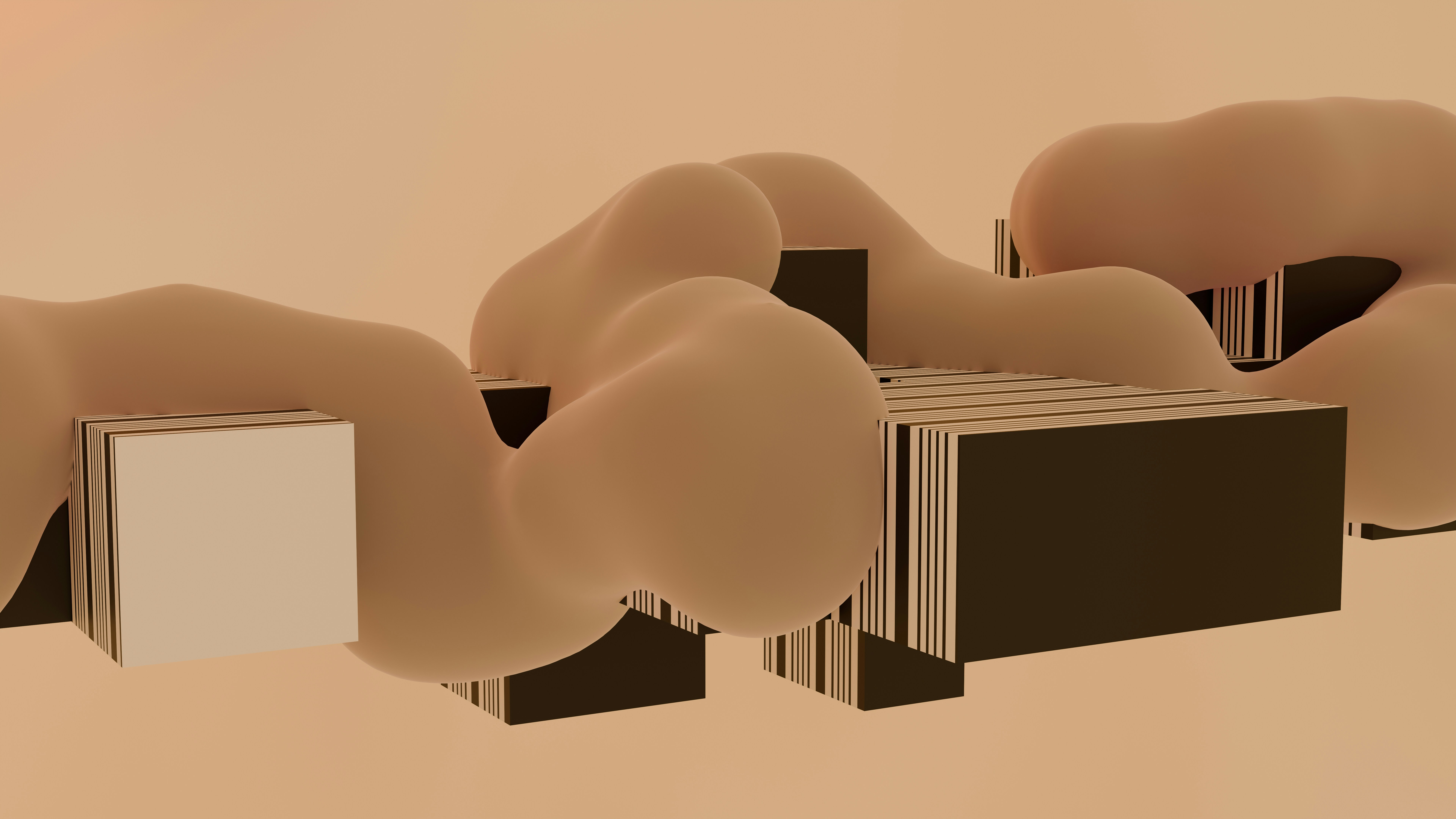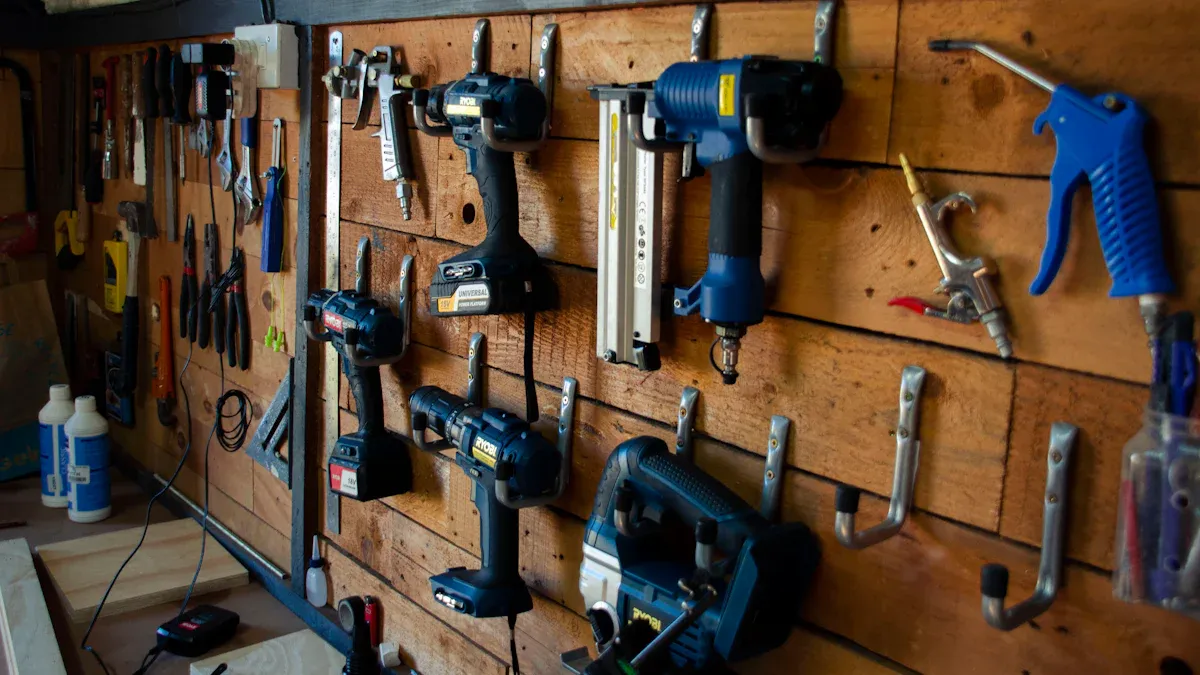Jigs and Fixtures Explained for Manufacturing Processes

Jigs and fixtures are important tools in manufacturing. They hold parts firmly and guide tools for accuracy. These tools are crucial in industries like aerospace, cars, and electronics. For example, jigs help drill circuit boards in electronics. Fixtures keep parts steady during assembly. They reduce mistakes and save materials by preventing waste. This improves efficiency and helps the environment. Their ability to repeat tasks makes them essential in modern factories.
What Are Jigs and Fixtures?
Definition of Jigs
Jigs are special tools that guide machines while holding parts. They help make sure work is precise and repeatable. For example, a drilling jig helps place a drill in the right spot. This ensures holes are made in the correct position every time. Jigs often use strong steel bushings to guide tools and keep them aligned.
In factories, jigs make work faster and more reliable. They are used in industries like electronics, woodworking, and cars. For instance, in electronics, jigs help drill circuit boards and hold parts during assembly. This makes sure small parts are placed correctly, creating high-quality products.
Definition | Description |
|---|---|
Jigs | Tools that hold parts in place and guide machines. |
Special tools that secure parts and guide cutting tools. They ensure work is accurate and repeatable. |
Definition of Fixtures
Fixtures are tools that hold parts steady during machine work. Unlike jigs, fixtures do not guide tools but keep parts still. This helps make work accurate and safe.
Fixtures are very important in industries like airplanes and medical tools. For example, in airplanes, fixtures hold turbine blades steady for precise work. In medical tools, fixtures help make surgical instruments and implants exactly right. This meets strict safety rules.
Fixtures also save time and money. By holding parts steady, they reduce mistakes and wasted materials. This makes them great for making lots of products quickly.
Fixtures are tools used to hold parts steady during machine work. They improve accuracy and make work more efficient.
Differences Between Jigs and Fixtures
Functional Differences
It’s important to know how jigs and fixtures work differently. A jig helps guide a tool to the right spot on a part. For example, a drilling jig makes sure holes are drilled in the correct place. A fixture, however, holds the part steady during work. It doesn’t guide the tool but keeps the part stable for tasks like milling or welding.
Here’s a simple comparison of their functions:
Feature | Jigs | Fixtures |
|---|---|---|
Function | Guides tools to specific spots | Holds parts steady during work |
Tool Movement | Moves with the tool | Tool stays still while part moves |
Stability | Lightweight and easy to handle | Heavy and stable for holding parts |
Attachment | Can be fixed to a table | Does not guide the tool |
Jigs are smaller and lighter, so they’re easier to use. Fixtures are heavier and built to keep parts steady during work.
Tip: Use a jig to guide tools. Use a fixture to hold parts steady.
Examples of Their Distinctions
You can see how jigs and fixtures differ in real-life manufacturing. Jigs are often used for drilling to make sure holes are accurate. For example, in car factories, jigs help drill holes in car parts precisely. Fixtures, on the other hand, hold parts steady during tasks like welding or assembly. In the same factories, fixtures keep car parts stable to ensure good quality.
Here’s a clear breakdown:
Type | Function | Example in Automotive Industry |
|---|---|---|
Jigs | Guide tools to exact spots on parts | Used to drill holes in car parts |
Fixtures | Hold parts steady for precise assembly or welding | Keep car parts stable during welding and assembly |
Both tools are very important for making high-quality products. Jigs guide tools, while fixtures focus on keeping parts steady and safe.
Note: Picking the right tool helps save time, money, and improves accuracy.
Purpose and Advantages of Jigs and Fixtures in Manufacturing
Enhancing Precision and Accuracy
Jigs and fixtures help make parts with exact measurements. They ensure every piece is made the same way. Jigs guide tools like drills to the right spot. Fixtures hold parts steady during work. Together, they make sure results are accurate and repeatable.
These tools keep production consistent, even for tricky tasks. This is very important in industries like cars and airplanes. Mistakes are reduced, saving materials and time. Parts made with jigs and fixtures fit perfectly, which is key for mass production.
Evidence Description | Key Points |
|---|---|
Precision and Repeatability | Jigs and fixtures ensure accuracy for safety-critical tasks. |
Consistency and Quality | They reduce defects and maintain high-quality standards. |
Improving Efficiency and Productivity
Jigs and fixtures make manufacturing faster and easier. They automate some tasks, saving time and effort. For example, a fixture holds a part still so machines can work faster. This increases production speed without losing quality.
These tools also lower costs. Less waste and fewer mistakes save money on materials and labor. Their repeatability ensures products are always made the same way. Safer processes also protect workers from accidents.
Improvement Aspect | Description |
|---|---|
Increased Production Rates | Jigs and fixtures speed up manufacturing by automating tasks. |
Reduced Manufacturing Costs | Fewer mistakes save money on materials and labor. |
Improved Product Consistency | Repeatability ensures products are made the same every time. |
Reducing Human Error
Jigs and fixtures help avoid mistakes by guiding tools and holding parts. They make sure tools are in the right place every time. For example, a drilling jig ensures holes are always in the correct spot.
By reducing errors, materials are used more efficiently. This also avoids the need to fix mistakes later. These tools ensure products meet strict quality rules. Even workers with less experience can use them to do tasks correctly.
Jigs and fixtures guide tools and hold parts steady.
They reduce mistakes, making products more accurate and consistent.
They save materials by preventing errors during work.
Jigs and fixtures improve accuracy, safety, and efficiency in manufacturing.
Types of Jig and Fixture
Types of Jig
Jigs are tools made for specific jobs. They guide machines and help make things accurately. Here are some common jigs:
Template Jigs: Flat plates with holes already drilled. They help drills make the same holes repeatedly, like in wooden furniture.
Plate Jigs: These have drill guides and clamps for extra steadiness. They are used in industries like airplanes to drill panels precisely.
Channel Jigs: These hold parts inside a channel shape, keeping them steady during work.
Leaf Jigs: These have a hinged part that opens and closes. They are easy to use and good for drilling.
Indexing Jigs: These let you work on parts at equal spaces, like cutting gears.
Type of Jig | Description | Uses |
|---|---|---|
Drill Jig | Helps drills make holes in the right spots repeatedly. | Used in metal and car industries. |
Template Jig | Makes sure holes are the same using pre-drilled templates. | Used in furniture making. |
Plate Jig | Adds accuracy with drill guides and clamps. | Used in planes and cars. |
Types of Fixture
Fixtures hold parts still so work can be done accurately. Here are some common fixtures:
Milling Fixtures: These hold parts on milling machines. They allow precise cutting adjustments.
Welding Fixtures: These keep parts from moving during welding. For example, they help make car brake pedals correctly.
Turning Fixtures: These hold oddly shaped parts on lathes for turning.
Inspection Fixtures: These hold parts steady during quality checks to ensure correct measurements.
Fixtures are very important in industries like cars and electronics where accuracy matters.
Examples of Their Applications
Jigs and fixtures are used in many industries. In electronics, template jigs help drill circuit boards. Fixtures hold small parts steady during soldering. In woodworking, jigs guide tools for straight cuts. Fixtures keep wood steady during sanding. Medical tools also use these to meet strict rules.
Jig Type | Example Use | Industry |
|---|---|---|
Diameter Jig | Makes sure bolt holes are in the right place on pipes. | Pipe Making |
Leaf Jig | Stops thin parts from bending during electronics work. | Electronics Making |
Multi-Station Fixture | Holds many parts at once for fast production. | Car Manufacturing |
Jigs and fixtures make work faster and more accurate. They are very important in modern factories.
Design and Manufacturing of Jigs and Fixtures
Key Design Considerations
Designing jigs and fixtures needs focus on accuracy and safety. These tools help by guiding machines and holding parts firmly. Important features include strong clamps and error-proof designs. Adjustable points make it easier to position parts. Simple clamps save time during setup.
Comfort is also important. Lightweight designs make work easier and less tiring. Space for chips and debris helps machines work smoothly. Testing designs before use ensures they work well and are reliable.
Design Principle | Description |
|---|---|
Foolproof Design | Stops mistakes during use. |
Clamping Efficiency | Holds parts quickly and securely. |
Adjustable Locating Points | Makes it easier to fit different parts. |
Clearance and Chip Escape | Leaves space for debris during work. |
Materials Used
The materials for jigs and fixtures affect how they perform. Tool steel is strong and lasts long, great for tough jobs. Aluminum is lighter, making it easier to handle.
Sometimes, mixing materials works best. For example, 3D-printed parts with steel inserts are both light and strong. This mix is good for areas needing strength but easy handling.
Material | Advantages | Best Applications |
|---|---|---|
Tool Steel | Strong and lasts long | Heavy-duty jobs |
Aluminum | Light and easy to handle | Jobs needing less weight |
Hybrid Approach | Combines lightness and strength | Jobs needing both strength and ease |
Modern Manufacturing Techniques
New methods like CNC machining and 3D printing have changed how jigs and fixtures are made. CNC machines are very precise, great for detailed designs. They can make small, exact parts for jigs and fixtures.
3D printing is fast and good for custom designs. It makes lightweight parts with special shapes, helping factories work better. Using both CNC and 3D printing together is now common in many industries.
Technique | Advantages | Applications |
|---|---|---|
CNC Machining | Very precise and reliable | Making detailed jig and fixture parts |
3D Printing | Fast and good for custom shapes | Lightweight and special designs |
Using these methods, you can make tools that are accurate and efficient for modern factories.
Applications of Jigs and Fixtures in Modern Manufacturing

Role in CNC Machining
Jigs and fixtures are key tools in CNC machining. They help guide cutting tools and hold parts firmly. This makes work more accurate and faster. For example, a fixture can keep a part steady while the CNC machine cuts it perfectly.
These tools also make work safer. They reduce the need for workers to adjust parts by hand. This lowers the chance of accidents. Jigs and fixtures also allow machines to run faster without losing quality.
Benefit | Explanation |
|---|---|
Better Efficiency | Guides tools and holds parts for quicker work. |
Higher Precision | Ensures accurate and repeatable machining. |
Shorter Setup Times | Cuts down preparation time, boosting productivity. |
Steady Quality | Makes parts that are always the same. |
Use in Additive Manufacturing
3D printing has changed how jigs and fixtures are made. Custom tools can now be created quickly and cheaply. This makes it easy to adjust designs for specific jobs. For example, a 3D-printed jig can hold a part steady during assembly for perfect placement.
These tools also improve accuracy in 3D printing. They hold parts securely, reducing mistakes and ensuring great results. This is very important in industries like airplanes and medical tools, where precision matters most. Lightweight but strong jigs and fixtures are especially useful in modern factories.
Jigs and fixtures hold parts steady and in the right place.
3D printing makes custom tools faster and cheaper to produce.
These tools help create parts that are always the same quality.
Applications in Mass Production
In mass production, jigs and fixtures are very important. They make sure every part is made with the same high quality. This is crucial for industries like cars and airplanes, where safety is key. For example, a welding fixture can hold many car parts at once, speeding up assembly.
These tools also help reduce mistakes. By keeping parts steady, they ensure uniformity in large batches. This lowers waste and saves money. Their strong grip allows machines to cut deeper and faster, increasing production speed.
Feature | How It Helps |
|---|---|
Precision | Ensures accuracy for safety-critical tasks. |
Efficiency | Allows faster work, boosting production rates. |
Consistent Quality | Produces parts that are always the same. |
Fewer Defects | Reduces errors and waste, saving materials. |
Jigs and fixtures are vital for making large numbers of products quickly and accurately.
FAQ
What is the main difference between jigs and fixtures?
Jigs help guide tools to the right spots. Fixtures keep parts steady during tasks like welding or cutting. Use jigs for tool placement and fixtures for holding parts still.
Why are jigs and fixtures important in manufacturing?
They make work more accurate and faster. They also reduce mistakes and help create consistent, high-quality products, especially in large-scale production.
Can jigs and fixtures be customized?
Yes, they can be made for specific jobs. New methods like 3D printing make creating custom jigs and fixtures quicker and cheaper.
What materials are commonly used for jigs and fixtures?
Tool steel and aluminum are often used. Steel is strong and lasts long, while aluminum is lighter and easier to handle.
How do jigs and fixtures reduce human error?
They guide tools and hold parts firmly in place. This ensures accurate and repeatable results, so fewer mistakes happen during work.
About Hunan Puka
Established in 2016 and based in Hunan, China, with a liaison point in Berlin, we are a Tier 2 supplier for the automobile industry. We specialize in the production of customized aluminum die-casting parts designed for machines with a closing force ranging from 280 to 1250 tons, with subsequent manufacturing process CNC machining and surface treatment. Our commitment to quality is reflected in our accredited quality management system, certified by ISO9001:2015 and IATF16949:2016 standards.


